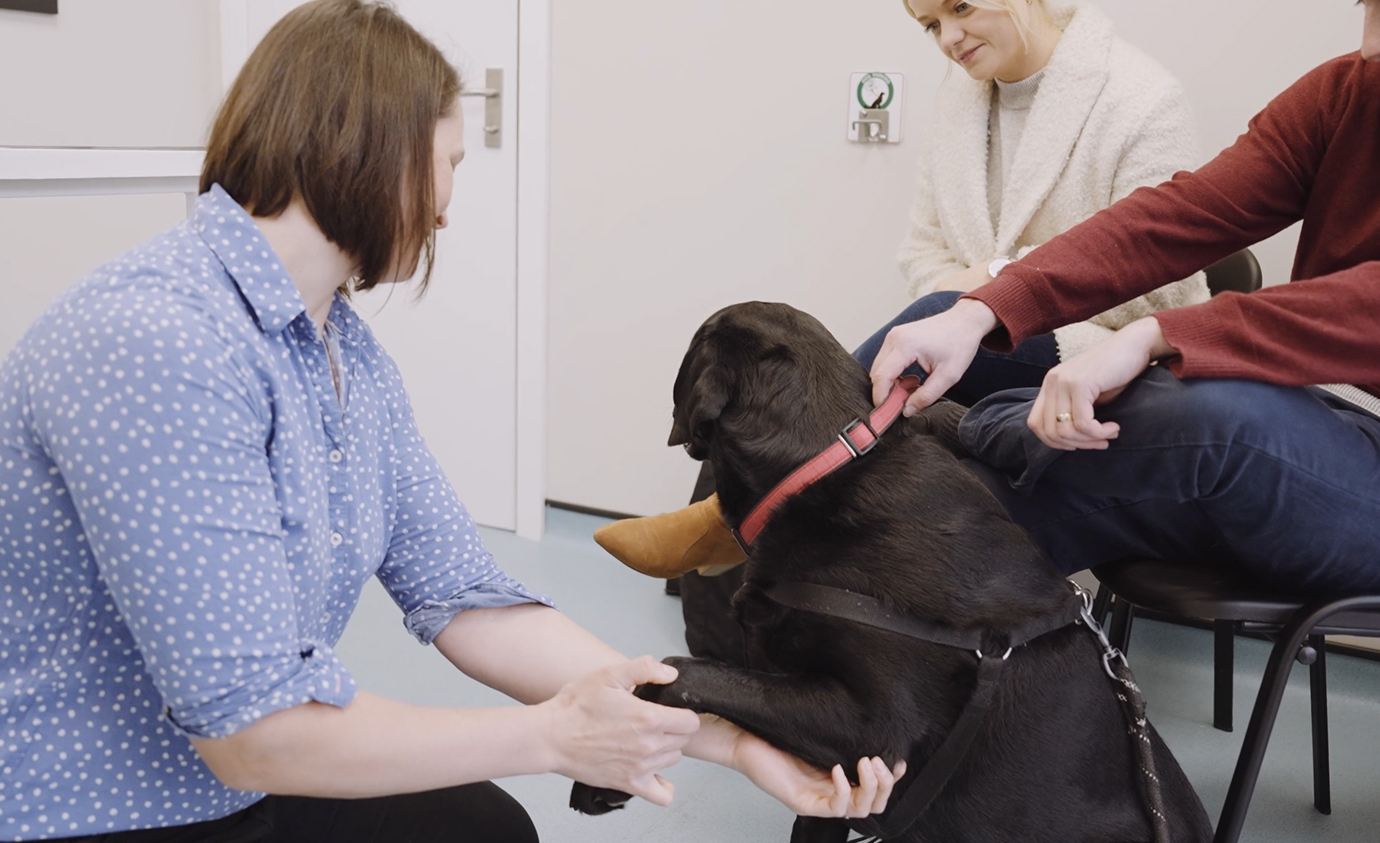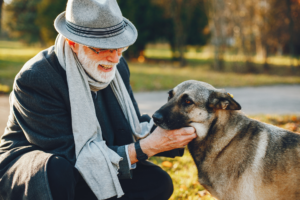Elbow dysplasia treatment at The Elbow Clinic
The Elbow Clinic offers an easily accessible and affordable option for families to have their pets treated all under one roof at our Basingstoke practice, by a team of experts coming together to provide a holistic approach to the treatment of elbow dysplasia.
What is elbow dysplasia?
Elbow dysplasia refers to the abnormal growth of your dog’s elbow joint during its development. The elbow joint is made up of three bones; the radius, ulna and humerus, and if they do not fit together perfectly, the forces in the elbow during weight bearing are unevenly distributed. Concentrated loading of the elbow joint in certain areas may produce cracks or fissures, while primary disease of the cartilage also contributes to abnormal development of the joint.
Both of these changes result in osteoarthritis, accompanied by a reduced range of motion and joint pain.
What are the signs?
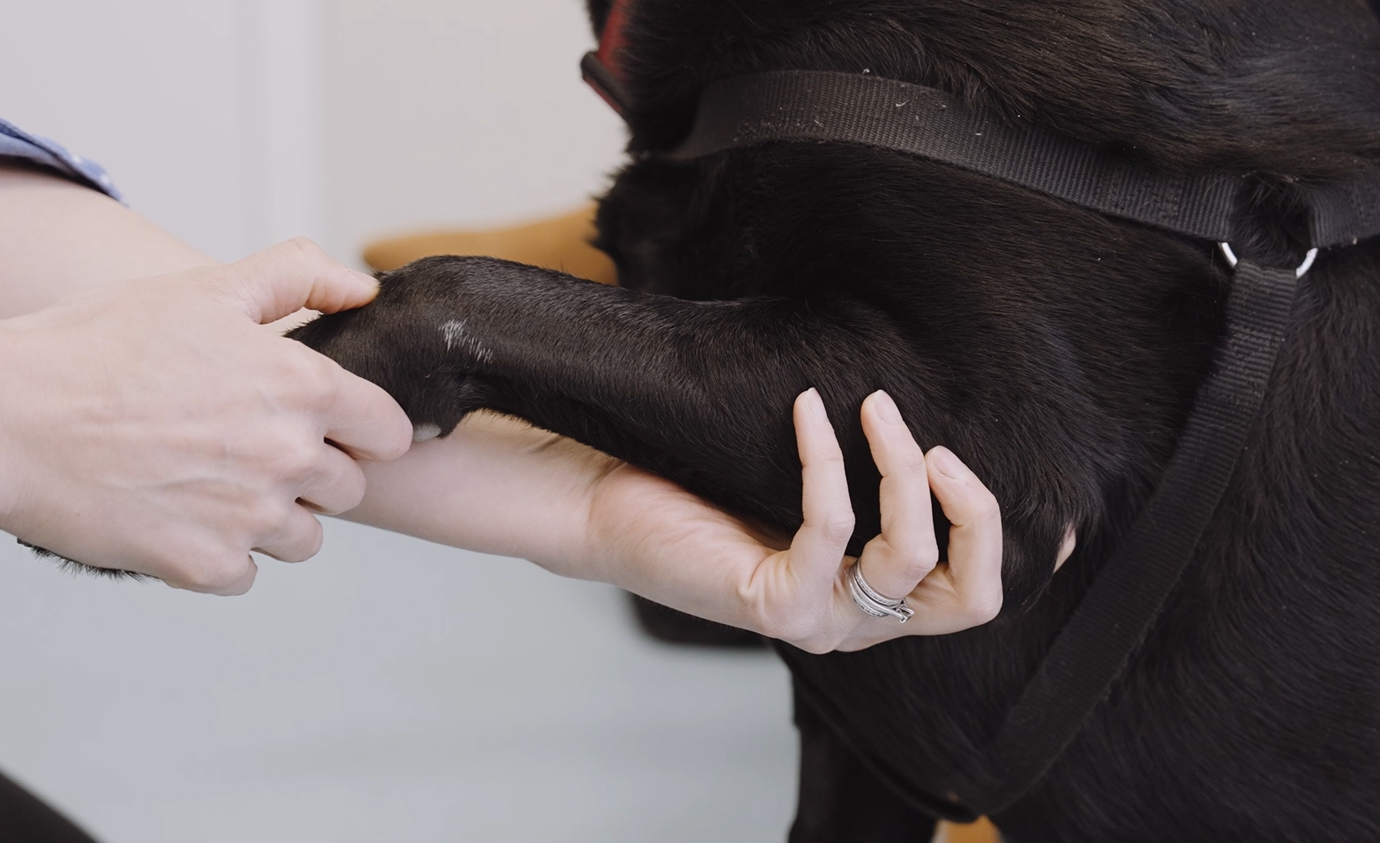
The key signs of elbow dysplasia are forelimb lameness and stiffness. Lameness usually comes with a characteristic head nod, with the head going up when the affected limb weight bears in an effort to try and unweight it. It is usually exacerbated by exercise and rest, with many dogs lame following rest but improving once they are up and moving, becoming lame again towards the end of exercise.
Most dogs with elbow dysplasia are diagnosed at a young age – often by the time they are two years old – though others do not present until they are older when affected by osteoarthritis.
What are the causes?
While genetics determine whether a dog has the genes for elbow dysplasia, other environmental factors such as obesity in puppyhood can influence whether a dog with those genes shows signs of pain and lameness.
In most dogs affected by the condition, the uneven concentration of forces in the elbow results in micro fractures of an area of the ulna called the coronoid process. These micro fractures can result in a very small area of the coronoid process fracturing away from the main bone, creating a free fragment within the joint; a fragmented coronoid process.
How we treat dogs with elbow dysplasia
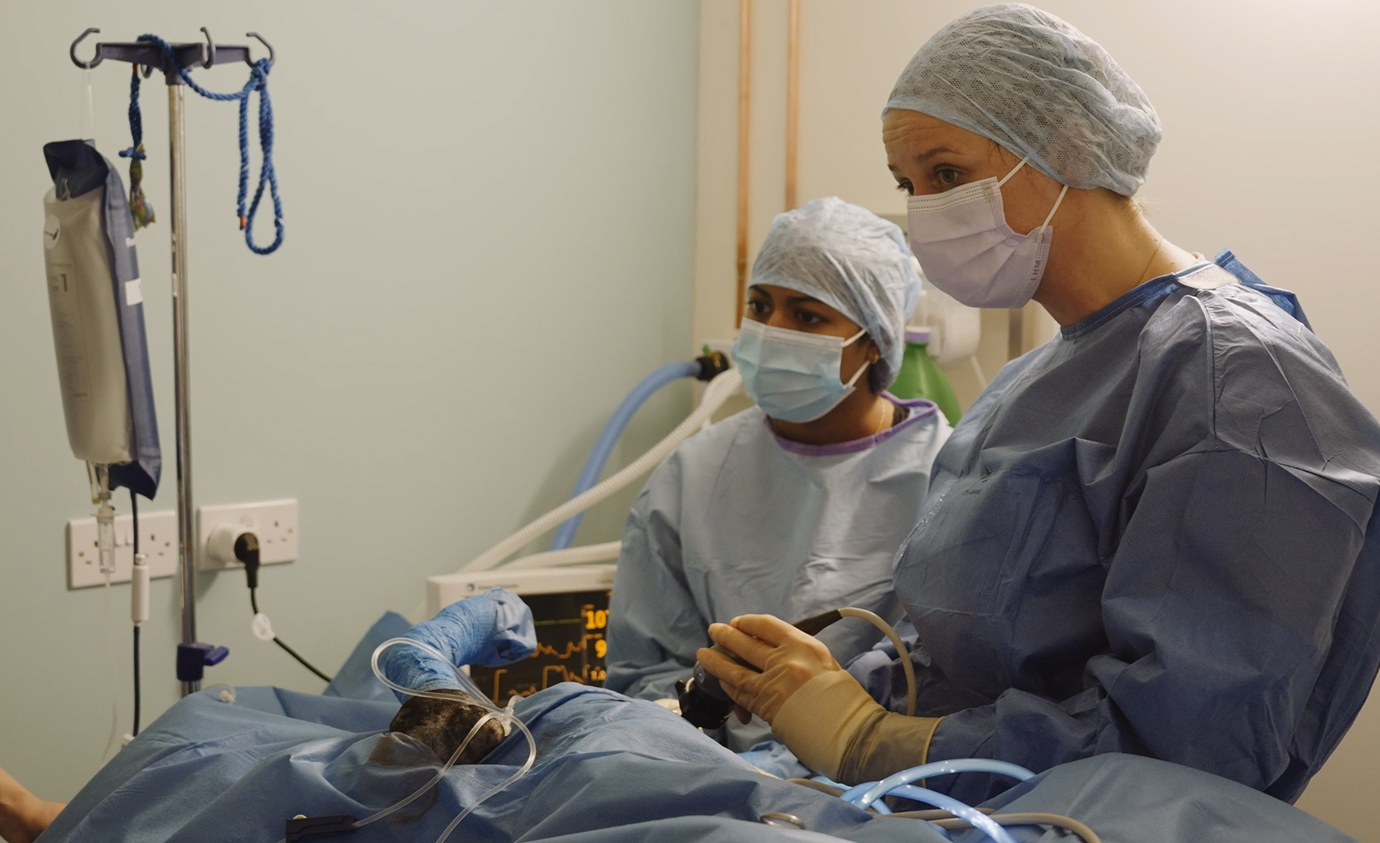
If your pet requires investigation for elbow dysplasia, they will attend a consultation with an orthopaedic surgeon at our Basingstoke branch for assessment before being admitted.
CT scan
In order to obtain images of diagnostic quality, your pet will need to be sedated or anaesthetised for a CT scan. The orthopaedic surgeon will review the images and, in some cases, may recommend referral of the images for a specialist imaging report. The findings of the CT scan and further treatment recommendations will be discussed with you in detail, as well as what to expect from your pet’s recovery and all potential complications of any required intervention.
Arthroscopy
If your pet has been diagnosed with the condition and arthroscopy has been recommended, this procedure will usually be carried out on the same day as their CT, under the same anaesthetic. If we identify it in both elbows, we can perform surgery on both sides in a single surgical procedure.
Arthroscopy is considered a gold standard technique that allows us a magnified and panoramic view inside your pet’s elbows. Your pet will usually be walking well the following day and recovery from surgery is normally rapid.
Post-operatively
Your pet will be discharged with written instructions for aftercare and medication, and at 10-14 days post-operatively we will remove their stitches. We will also organise an appointment with a veterinary physiotherapist for assessment and to make a rehabilitation plan with you.
The Elbow Clinic is being supported by a fantastic local peripatetic surgical service, ProVetSurg; owned and led by Veterinary Surgeon, Nicci Meadows. Nicci has worked alongside the team at all four of our practices for over 8 years now, providing more advanced imaging and surgical options for our patients.
Joint injections
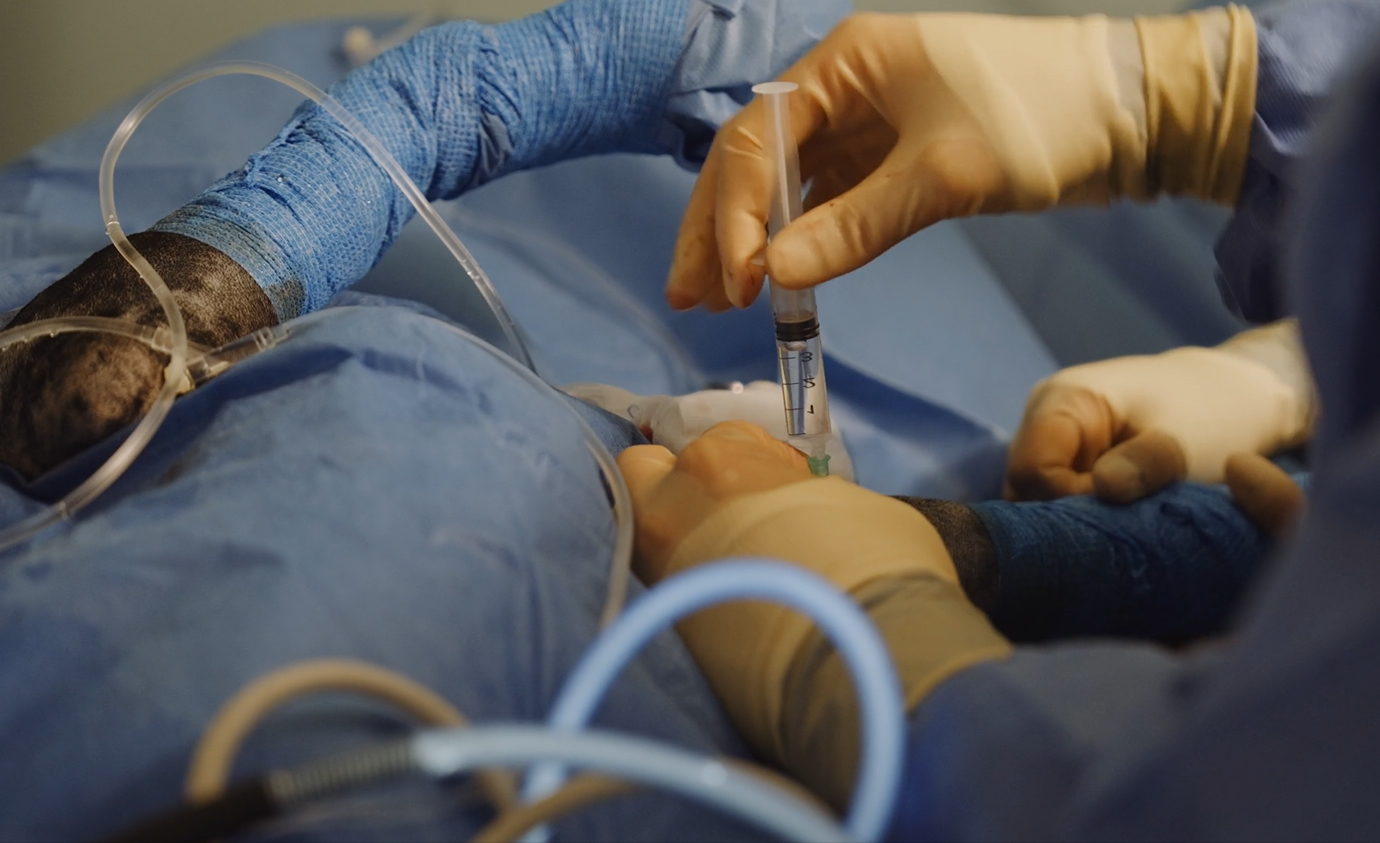
Depending on the arthroscopic examination findings we might recommend joint injections for your pet. These can be done at the same time as arthroscopy, and under the same anaesthetic.
PRP injections
Platelet Rich Plasma (PRP) injections involve taking a sample of blood from your pet, then using the plasma (liquid) portion containing platelets to reinject into the affected joints. Platelets release factors into the joint that theoretically help to repair damage in lower grades of osteoarthritis and aim to support the joint before more chronic changes develop. This is especially important in helping repair the damaged cartilage we see in all cases of osteoarthritis.
Hyaluronic acid injections
A hyaluronic acid injection (ArthroVisc 40) is often used together with PRP injections. Hyaluronic is a major component of synovial fluid (fluid normally found inside a joint) and has an important role to play in improving shock absorbing properties of cartilage and lubrication of joints. In cases of osteoarthritis, there is a decrease in concentration of hyaluronic acid inside the joint.
Stem cell therapy
Stem cell therapy is a more recently available treatment we can offer your pet to improve the comfort of joints affected by elbow dysplasia and osteoarthritis. Typically we will harvest a fat sample from your pet at the time of arthroscopy and send this tissue for culture, reinjecting the stem cells into the affected joint 2-4 weeks later under sedation. Your pet’s stem cells will be kept at the lab and the injections can be repeated if necessary, without repeating harvest of the fat tissue.
Post-operative rehabilitation
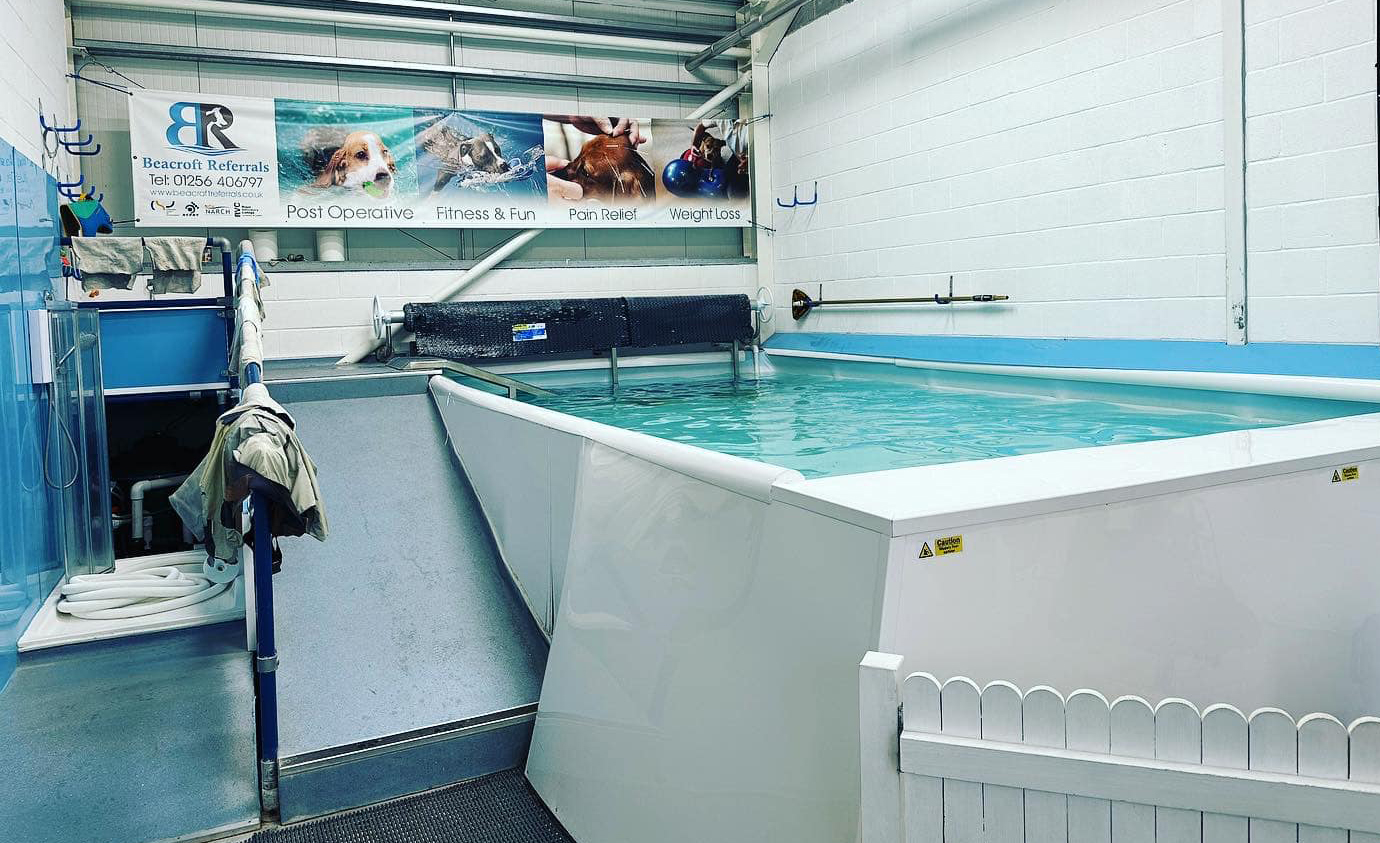
We strongly believe in providing post-operative rehabilitation support to our patients and their families, as this step in the journey is essential to achieving a successful outcome.
This is why we have also teamed up with Veterinary Physiotherapist, James Beacroft, owner at our local rehabilitation facility; Beacroft Referrals Veterinary Rehabilitation and Hydrotherapy Centre.
James will be providing patients with a follow-up appointment at our Basingstoke branch where, together with our vets, he will assess patient status before providing appropriate physiotherapy treatments to improve the recovery process. James will invite these patients to his centre to continue their treatment in his safe hands with access to advanced modalities such as underwater treadmill and force plate analysis.
After a course of physiotherapy (typically 6-12 weeks), your pet will be reassessed a final time by an orthopaedic surgeon.
What else can you do to help?
The approach to management of elbow dysplasia and osteoarthritis is multi-faceted, and early diagnosis, surgery and rehabilitation form one part of the picture, but there are things that you can do at home!
Weight management
This is one of the most important factors that influences how a patient with joint disease progresses in their recovery. It is vital that your pet remains a healthy weight in order to minimize the impact on their joints. We will discuss weight management and diet with you and, if necessary, your pet can be referred to our Weight Clinic in order to support you with this.
Joint supplements
We can advise you on how to choose the best supplements for your pet, which can be a useful addition to the management of elbow dysplasia and osteoarthritis.
Modify your pet’s environment
By making simple changes to your pet’s environment, you can help them to cope better with the condition in more advanced cases. This could include placing a rug on a slippery floor, or using a ramp to get in and out of the car or in place of steps in your garden.
We aim to make the referral process as smooth as possible. If you have a case that you would like to refer to The Elbow Clinic, please complete our referral form. We will be in touch as soon as possible.
